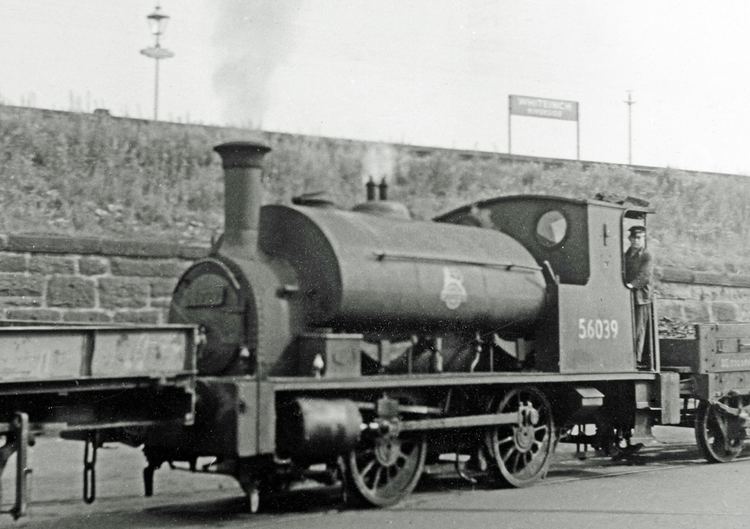Power type Steam Configuration 0-4-0ST | UIC class B n2t | |
 | ||
Build date 1885, 1895, 1900, 1902, 1908 | ||
The Caledonian Railway 264 and 611 classes were 0-4-0 saddle tank locomotives designed by Dugald Drummond and built by Neilson and Company in 1885. Later examples were built at St. Rollox railway works under the direction of John F. McIntosh in 1895, 1900, 1902 and 1908.
These small shunters remained in long service under the LMS (who designated all Neilson saddle locomotives as Class 0F) and British Railways, with the last of the class withdrawn in 1962. The 0F class, sometimes referred to by the generic term "pugs", were mainly used as works shunters in the area around Glasgow, Scotland, often running with home-made tenders to improve their small coal capacity. Like most 0-4-0 tanks of the period they had outside cylinders and inside slide valves driven by Stephenson valve gear. A number were later sold into private industry and several even made it as far south as Crewe where they acted as works shunters in British Railways days. None of the various 0F class locomotives have survived into preservation.
They are easily confused with the earlier 1882-built ex-North British Railway Class Y-9 (NBR Class G), also designed by Dugald Drummond to a similar saddle tank design, although the 0F is distinguished by a taller chimney and larger circular windows. Both were originally commissioned from Drummond by Neilson & Co to a standard design and were used by North British, LNER and British Railways. One NBR Y-9 shunter (No.42 68095) has been preserved at the Bo'ness & Kinneil Railway museum.
Construction
Construction was spread over several years, and eventually totalled 34 locomotives, as follows:
All were built at the St Rollox works of the Caledonian Railway. Orders Y1, Y22 and Y27 were placed by Dugald Drummond and formed the 264 Class; the remainder were ordered by John F. McIntosh and formed the 611 Class.
Smokey Joe is a model steam locomotive based on the 0F which has been in the Hornby Railways range since 1983 and has been highly popular, being regarded as a "permanent fixture" by the company. A 'starter'-level engine, it has also been the centrepiece of an eponymous train set in the Hornby range. The model was featured in the main Hornby Range up to 2010; it has since been moved into the entry-level "RailRoad" range for 2011.
Hornby's model of the Class 0F has been in the Hornby range since 1981, initially in Caledonian Railway blue. The simplified 1983 "Smokey Joe" version omits the wire handrails that had been present on earlier variants. According to the 2011 Hornby Handbook, the model was originally launched as a "character" locomotive inspired by a Glaswegian engine which had "Smokey Joe" scrawled on its tank in chalk, an effect the model tries to replicate.
The actual number 56025 was an early 264 0F class built in 1890 and for its working life was primarily based at St. Rollox railway works, where it was the works shunter until its withdrawal in 1960. The livery of the model is based upon the mixed traffic livery of British Railways, black with red and white lining. Photographs of the original 56025 from 1955 show that instead of the graffiti, the engine had a lined saddle tank with an early British Railways "cycling lion" crest and, unlike the model, an enclosed footplate (as a works shunter, it would not have required a large quantity of coal). Most other members of the class were unlined black with an open footplate.
The model is powered by a small, 12 V "HP motor" of the same type as used in Scalextric slot cars. As a result, the locomotive has drawn complaints from railway modellers that the motor is too fast for the engine to be realistic, with poor low-speed response. As a result, it is usually regarded as a toy, rather than a model. It does not come with DCC capability, although can be converted.
